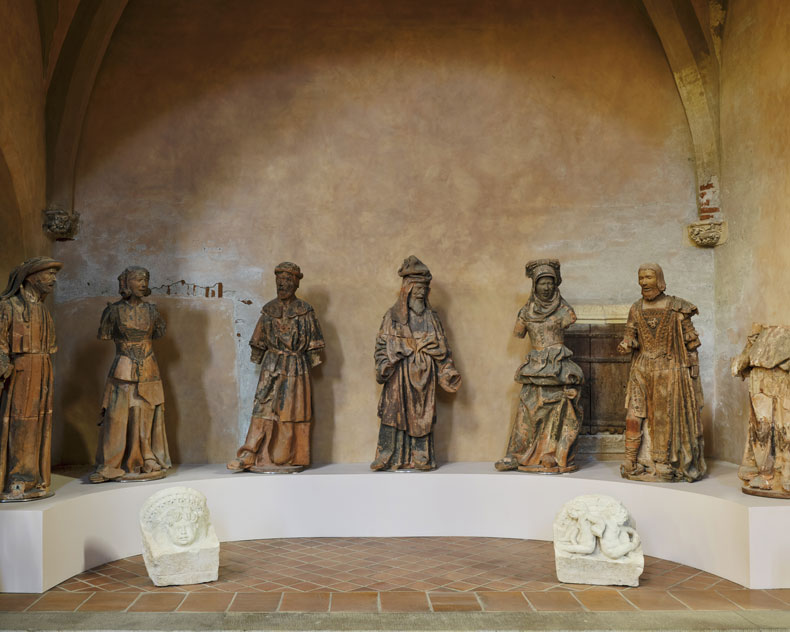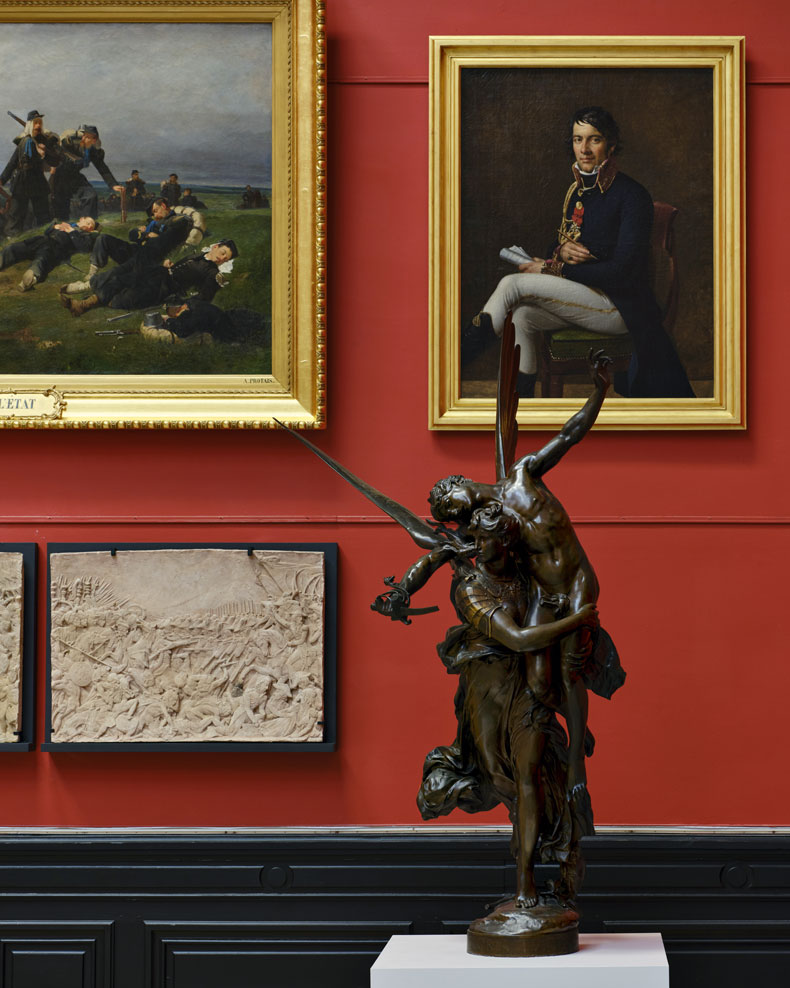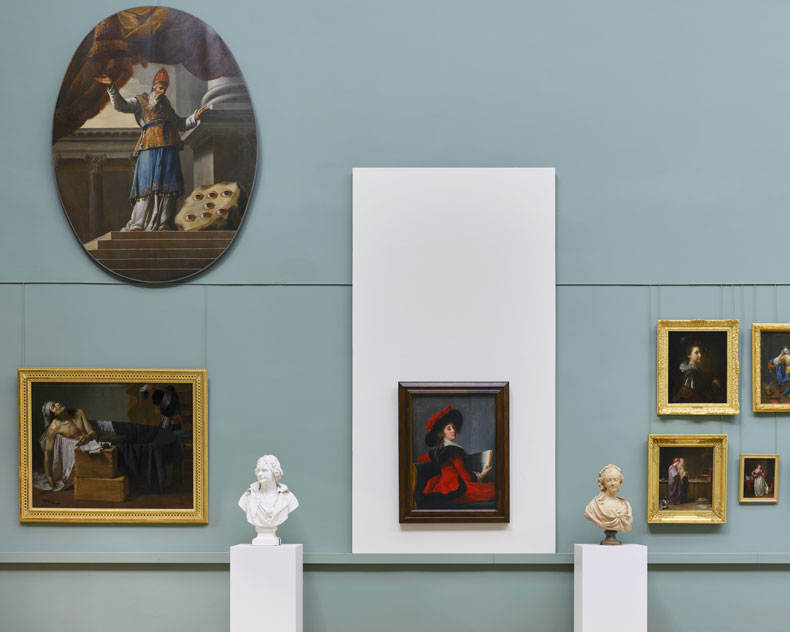From the December 2025 issue of Apollo. Preview and subscribe here.
I am standing in the cloister of the Musée des Augustins in Toulouse, looking out into the garden at a pile of rubble. To my right, six or seven Romanesque sculptures are lined up neatly along the wall, each one swaddled in plastic. The longer I stand there, the more those wrapped figures start to take on other forms: body bags, sleeping bags, emergency blankets, sacks of loot, bubble wrap.
All of these associations feel apt for this extraordinary place, which is, when I visit in late October, approaching the final stages of a seven-year period of renovation, since the building has served many different purposes over the years, some all at once: a religious complex, a secular museum, a home for plundered goods, a haven for endangered artworks and a marker of local pride for France’s fourth-largest city. Constructed in the 14th century as an Augustinian convent – a bastion of resistance against the spread of Catharism, a sect regarded as heretical by the Catholic Church – the complex was occupied by Augustinians until the French Revolution. At that point it was secularised, reopening in 1795 as the Musée de la Republique, a repository for many of the works that were confiscated from the French aristocracy and clergy.

Since then, the museum has been through several more overhauls, notably in the 19th century when much of the building was demolished and rebuilt, primarily in order to dampen the museum’s overtly religious characteristics. In the 1940s another period of works began, in which the ‘Temple of the Arts’ – designed in the 1830s by the pleasingly named architect and urban planner Urbain Vitry and plonked down in the church – was removed. At the same time, chapels, various windows and the walls of the gothic halls were restored, extensive archaeological excavations were conducted and a new entrance was built, modelled on a now-destroyed Augustinian chapel nearby.
This latest raft of transformations, then, might not seem all that major, but Toulouse’s most important museum has been shut, on and off, since 2018, leaving a significant gap in the cultural life of the city. The works began with a partial closure to allow for renovations to the glass roofs of the painting and sculpture gallery and a project to make the site more accessible, before attention turned in the last couple of years to more major curatorial changes. It has all cost some €14m, almost half of which has been spent on the new entrance, an angular, white, cavernous structure that is at once strikingly modern and – with its long, arched ceiling – carries a faintly ecclesiastical echo.
The entrance became visible from the street only in August but, if the somewhat feverish local news coverage is anything to go by, some Toulousians are already taking umbrage with the decision of the architects, the Portugese firm Aires Mateus, to use white stone from the Dordogne, rather than the pinkish clay bricks from which the rest of the museum is built. My guide at the museum, Isabelle Balon-Barberis, tells me Toulousians have always had ‘a bit of a complex’ about not having a distinctive local stone in the manner, for instance, of Paris and Bordeaux. That may help explain the over-correction performed by Toulouse’s architects, who plumped for pink bricks throughout the city and earned Toulouse the nickname of ‘La Ville Rose’.

The museum is being unveiled in two stages: this month the Romanesque hall and the painting and sculpture galleries will open to visitors, while the other two main spaces in the museum – the gothic gallery and the church – are scheduled to be ready by June next year. If this gives the impression that the museum has overstretched itself, I can’t help feeling that it is more down to the ambition of the museum’s director, Laure Dalon, who arrived in 2022 after six years as head of the Musées d’Amiens, than it is about poor planning. As we stroll along the cloister, with the view on to the cluttered garden and builders hauling scaffold poles across the courtyard, she is already thinking about what comes after this. ‘In three, four, five years we hope to have built some new spaces dedicated to contemporary art,’ she says. ‘At the moment if we want to have temporary exhibitions, we have to be creative.’
There is already something approaching contemporary art at the museum: the Romanesque hall just off the cloister. The room is filled with 96 columns in shades of brown, orange and blue, each one topped by a carved Romanesque capital brought to the museum from endangered, restored or destroyed churches around Toulouse: the city’s cathedral, the basilica of Notre-Dame de la Daurade, and the basilica of Saint-Sernin, the only one of the three that still stands today in something resembling its original 11th-century form. These capitals, which depict everything from saints to biblical scenes and Stations of the Cross to monster-headed birds, are some of the oldest pieces in the museum; the columns, and the coloured lampshades that hang over each one, are the most up-to-date works, designed by the Cuban-born artist Jorge Pardo in 2014. While the installation predated Dalon’s tenure, this ‘dialogue between the 12th and the 21st centuries’, as she describes it, is in tune with her desire to make the museum a ‘living place’.

Everything sprouts off the central cloister, which means that, as Dalon puts it, ‘there is no one way to discover the museum’. It makes for a mazy, choose-your-own-adventure-style experience, which is exactly what Dalon says she has tried to evoke with her rehang of the paintings and sculpture galleries on the first floor. These two massive rooms, painted sage green and red, respectively, are the only part of the museum that really resemble a traditional gallery space. Constructed as a huge hall in the 19th century on the site of what was the convent refectory, and divided into two large rooms in the 1980s, it has soaring ceilings and cavernous skylights. Previously, the centre of each room was bare, with the paintings hung on the surrounding walls. Now sculptures, mostly 19th-century marble figures and busts, are peppered throughout the space.
In the green room, the standout is a brooding moustachioed bust by Bernard Lange of Geoffrey d’Astier (1824). A lively Hunting Nymph (1888) in white marble by Alexandre Falguière dominates the centre of the red room, while Antonin Mercié’s bronze masterpiece David, Vanquisher of Goliath (1872) stands nearby, bagged up and ready to be unleashed – creating intriguing sight lines from various points. ‘Beforehand, you could see everything in one go,’ Dalon says. ‘It was important for me to create surprises and to allow visitors different perspectives.’ This has resulted in some radical interventions: a white booth, for example, within the red room, bearing paintings inside and out, all in the hope of creating a feeling of ‘intimacy’.

Standing in the red room’s doorway, one of the first works you see is one of the museum’s most recent acquisitions: Descent into the Abyss (1882) by the Toulouse-born Henri Martin. It’s a work of gruesome Symbolism, a gloomy cacophony of tigers, serpents and howling figures that might surprise anyone who has visited the Capitole, Toulouse’s neoclassical city hall, which contains a whole room of pastoral landscapes and sunny, pointillist city views by Martin. It has, in Dalon’s rehang, been partially obscured by a white marble sculpture, The Nightmare (1894), by the Paris-born neoclassical artist Eugène Thivier, which depicts a fitful man lying prostrate, fending off a dragon-like creature that could just as well have been modelled on a figure from Martin’s painting.
If these rooms feel fuller than they did before, Dalon stresses that her intention was to ‘give the feeling that there are more things to see than there are’. In fact, some culls have been made, and works moved into the staircases and other nooks of the museum. There is one work, however, that would never have left the gallery even if Dalon wanted it to. Jean-Joseph Benjamin-Constant’s seven-metre-high painting, The Entry of Mahomet II into Constantinople, which depicts the aftermath of the two-month siege of the city by the Ottomans in 1453, is the centrepiece of the gallery. Ironically, given its title, it is far too big to get in or out through any of the museum’s doors, so it remained in the gallery during the renovation work, swaddled in plastic wrap.

Commissioned by the French state in 1876 and sent straight to the Musée des Augustins, it was fed into the gallery through the tallest, thinnest door I have ever seen; stand in the red gallery today and that door is still there, just about, plastered over and painted such that it is hardly visible save for the faint outline of the hinges. There is something amusing about this secularised Augustinian convent displaying a huge memorialisation of the end of Christian Constantinople, just as there is something bold in the decision to foreground Orientalist work in these galleries. Along with Benjamin-Constant, Delacroix’s magisterial Sultan of Morocco (1845) and the Toulousian painter Édouard Debat-Ponsan’s The Massage (1883), a rather queasy take on Manet’s Olympia set in a hammam in Istanbul, draw the eye here.
This all makes for a wonderful eclecticism that visitors to French regional museums will recognise, where works by lesser-known local painters – many of them revelations – are speckled with a Delacroix here, a Rodin or a Toulouse-Lautrec there. That dynamic is borne out by two of the stand-out works in the sage room, for instance, which offer opposing views of Revolutionary France. One wonders what Élisabeth Vigée Le Brun, the favourite portraitist of Marie Antoinette, would think of her painting of the Baroness de Crussol – wife of the lieutenant-general of the king’s armies, clad in scintillating red and half-turned to catch the viewer’s eye as she holds an opera score by Gluck, the favourite composer of, yes, Marie Antoinette – being hung a few metres from a visceral painting of the death of the Revolutionary hero Marat. The latter was made by Joseph Roques, who was born in Toulouse in 1757 and taught Ingres, among others, at the city’s Royal Academy of Arts. One of several similar produced in 1793 on the encouragement of the National Convention in Paris, this version embellishes Jacques-Louis David’s pre-eminent version of the scene with several added details, including an allusion to the tricolore. Few works can match the horrifying stillness that David achieves, but Roques’s painting has a meticulously rendered violence that more than holds its own against Vigée Le Brun’s vision of aristocratic poise.

The Musée des Augustins may today be as secular as any other French institution, but echoes of Christian benevolence can still be keenly felt. Nowhere more so than in the church – still in progress when I visit and scheduled to reopen next year – which is something of a sanctuary for the discarded. Take the gargoylish crowd of terracotta sibyls and prophets, sculpted by Jean Bauduy in 1523, which once loomed over visitors to the Basilica of Saint-Sernin. By the early 20th century these figures were so degraded that they had to be ushered into the safety of the museum, where they now stand in a semi-circle, majestic in their limblessness and their fading traces of colour.
A few metres away, I spot a panel casually propped against a side wall that turns out to be Rubens’s Christ Between the Two Thieves (c. 1635), which was taken by Napoleon for the museum. It was only available for plunder, Balon-Barberis tells me, because it had been rejected from the convent in Antwerp that commissioned it, on the grounds that only an artist who doubted God’s benevolence could have painted Christ letting out such a visceral howl of pain. Just opposite, I find a long painting on poplar by the 15th-century Florentine painter Giovanni di Francesco – a meticulously detailed, richly coloured work that is as good as any Pesellino or Uccello I’ve seen – that was stolen by the Nazis from an unknown private collection and recovered at the end of the war. It is now exhibited by the museum as an ‘MNR’ work (Musées nationaux récupération), which gives an open invitation to any descendants of the work’s rightful owners to come and claim it. ‘It doesn’t belong to us,’ Balon-Barberis says, ‘but it’s our duty to hang it.’

The Musée des Augustins is returning at a fascinating time for French museums. I am here not long after the heist at the Louvre and a few months into the Pompidou’s five-year hiatus, two events that constitute a blow – however glancing – for Paris’s unimpeachable status as the centre of the French art world. The museum’s two opening dates fall either side of the French municipal elections, too, which take place in March, and Toulouse’s incumbent mayor, Jean-Luc Moudenc, has already weighed in on the new entrance, telling locals that the shape and the choice of materials had been ‘a big topic of debate during the consultation period’. We are yet to find out what Toulousians make of the project as a whole, but they are lucky to have a world-class museum of fine arts and an emblem of civic pride right in the heart of the city. If there are any quibbles – over the placement of a 12th-century carving, say, or the restoration of the cloister roof – it must be said that, over seven turbulent centuries, this place has seen worse.
The Musée des Augustins, Toulouse, reopens on 19 December.
From the December 2025 issue of Apollo. Preview and subscribe here.